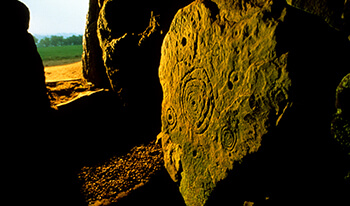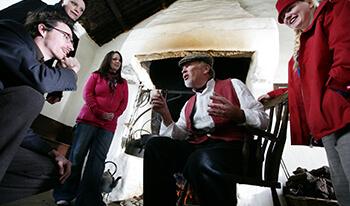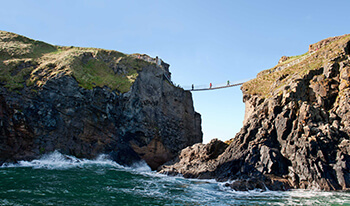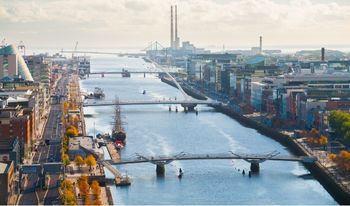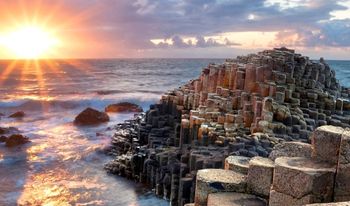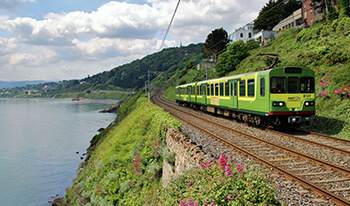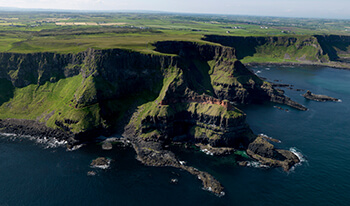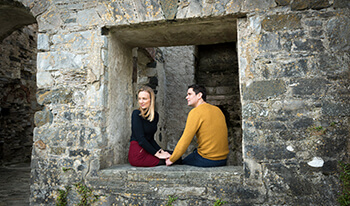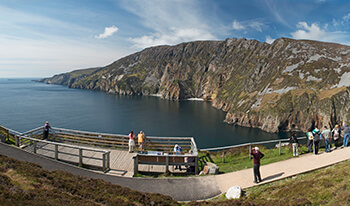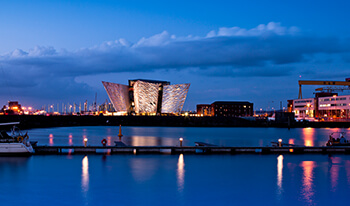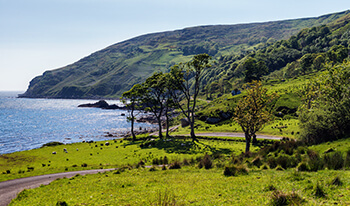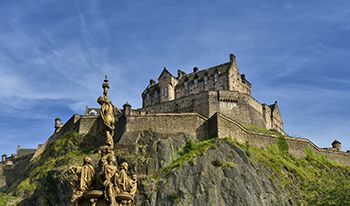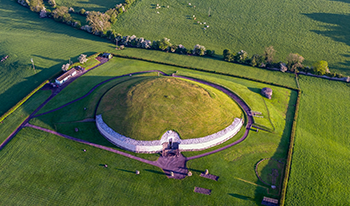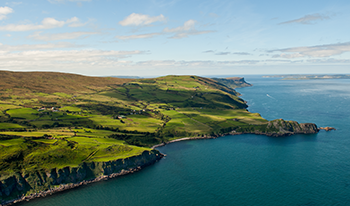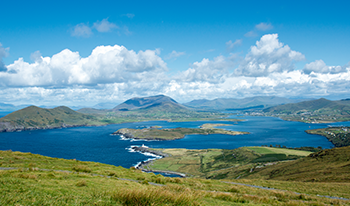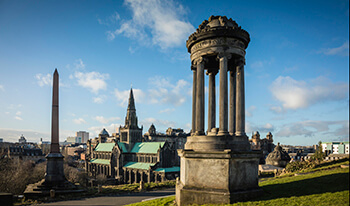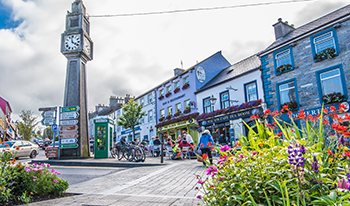Belfast (from the Irish: Béal Feirste meaning "Mouth of the (River) Farset")is the capital city of Northern Ireland and the seat of devolved government and legislative assembly in Northern Ireland. It is the largest urban area in Northern Ireland and the province of Ulster, the fifteenth-largest city in the United Kingdom and the second largest city on the island of Ireland. The city suffered greatly during the period of disruption, conflict, and destruction called the Troubles, but latterly has undergone a return to a sustained period of calmness and growth.
Originally a town in County Antrim, the county borough of Belfast was created when it was granted city status by Queen Victoria in 1888.
The name, Belfast, is the anglicised version of the Irish Béal Feirste, which translates as "Mouth of the (River) Farset". This term refers to the sand bar that formed where the River Farset met the River Lagan at what is now Donegall Quay and flowed into Belfast Lough, which became the hub around which the city developed.
The site of Belfast has been occupied since the Bronze Age. The Giant's Ring, a 5000-year-old henge, is located near the city, and the remains of Iron Age hill forts can still be seen in the surrounding hills. Belfast remained a small settlement of little importance during the Middle Ages. John de Courcy built a castle on what is now Castle Street in the city centre in the 12th century, but this was on a lesser scale and not as strategically important as Carrickfergus Castle to the north, which was built by de Courcy in 1177. The O'Neill clan had a presence in the area. In the 14th century the Clan Aedh Buidh, descendants of "Yellow" Hugh O'Neill built Grey Castle at Castlereagh, now in the east of the city. Conn O'Neill also owned land in the area, one remaining link being the Conn's Water river flowing through east Belfast.
Belfast became a substantial settlement in the 17th century after being established as a town by Sir Arthur Chichester, which was initially settled by Protestant English and Scottish migrants at the time of the Plantation of Ulster. (Belfast and County Antrim, however, did not form part of the Plantation scheme.) In 1791, the Society of United Irishmen was founded in Belfast, after Henry Joy McCracken and other prominent Presbyterians from the city invited Theobald Wolfe Tone and Thomas Russell to a meeting, after having read Tone's "Argument on Behalf of the Catholics of Ireland". Belfast blossomed as a commercial and industrial centre in the 18th and 19th centuries and became Ireland's pre-eminent industrial city. Industries thrived, including linen, rope-making, tobacco, heavy engineering and shipbuilding, and at the end of the nineteenth century, Belfast briefly overtook Dublin as the largest city in Ireland. The Harland and Wolff shipyards became one of the largest shipbuilders in the world, employing up to 35,000 workers. Belfast was heavily bombed during World War II. In one raid, in 1941, German bombers killed around one thousand people and left tens of thousands homeless. Outside of London, this was the greatest loss of life in a night raid during the Blitz.
The Troubles Since its emergence as a major city, it had been the scene of various episodes of sectarian conflict between its Roman Catholic and Protestant populations. These opposing groups in this conflict are now often termed republican and loyalist respectively, although they are also referred to as 'nationalist' and 'unionist'. The most recent example of this is known as the Troubles - a civil conflict that raged from c.1969 to the late 1990s. Belfast saw the worst of the Troubles in Northern Ireland, particularly in the 1970s, with rival paramilitary groups forming on both sides. Bombing, assassination and street violence formed a backdrop to life throughout the Troubles. The Provisional IRA detonated twenty-two bombs, all in a confined area in the city centre in 1972, on what is known as "Bloody Friday", killing nine people. Loyalist paramilitaries, the Ulster Volunteer Force (UVF) and Ulster Defence Association (UDA) claimed that the murders they carried out were in retaliation to the PIRA campaign.
